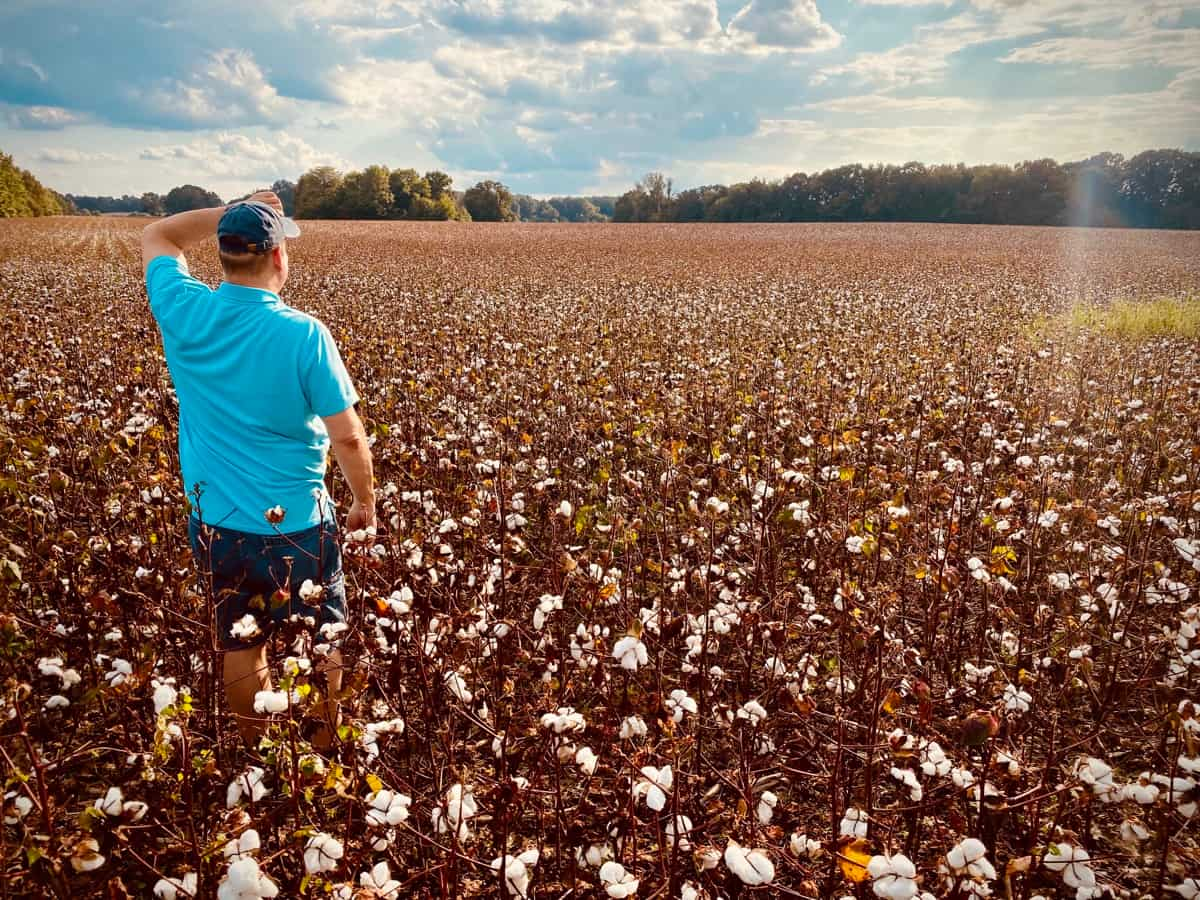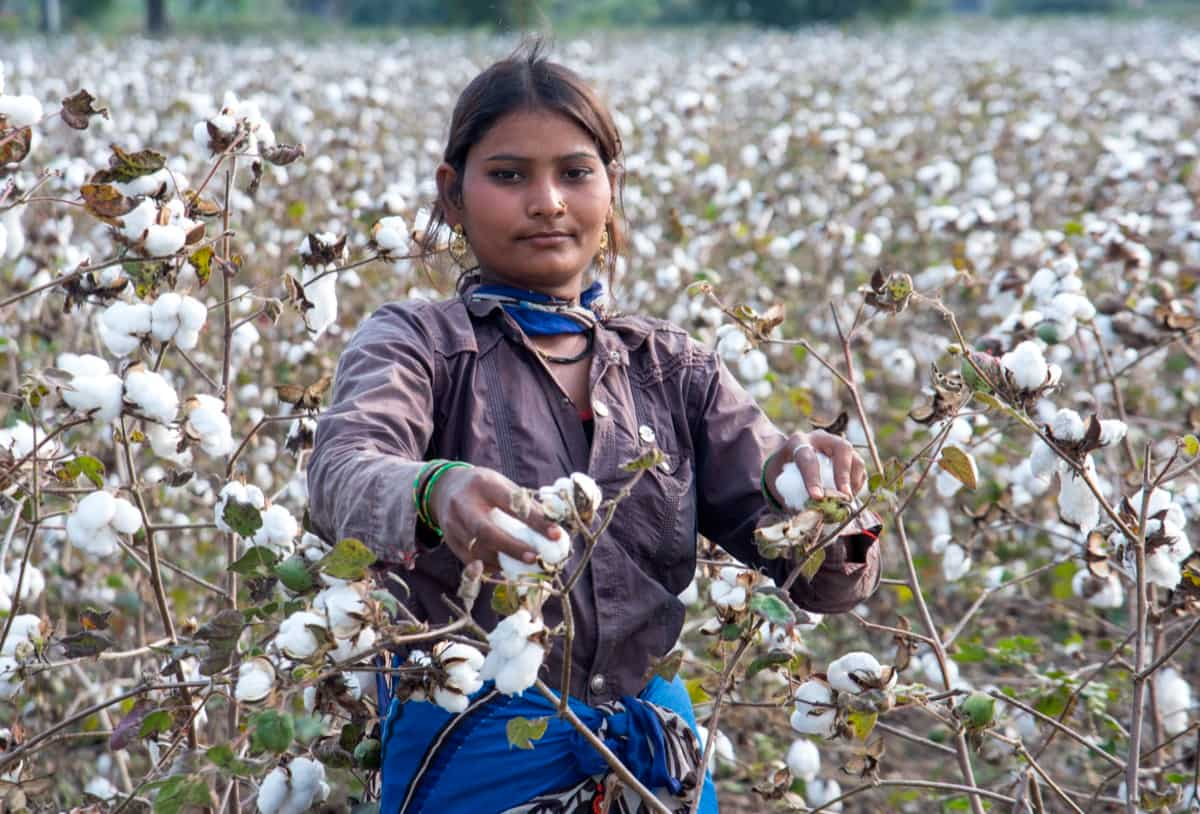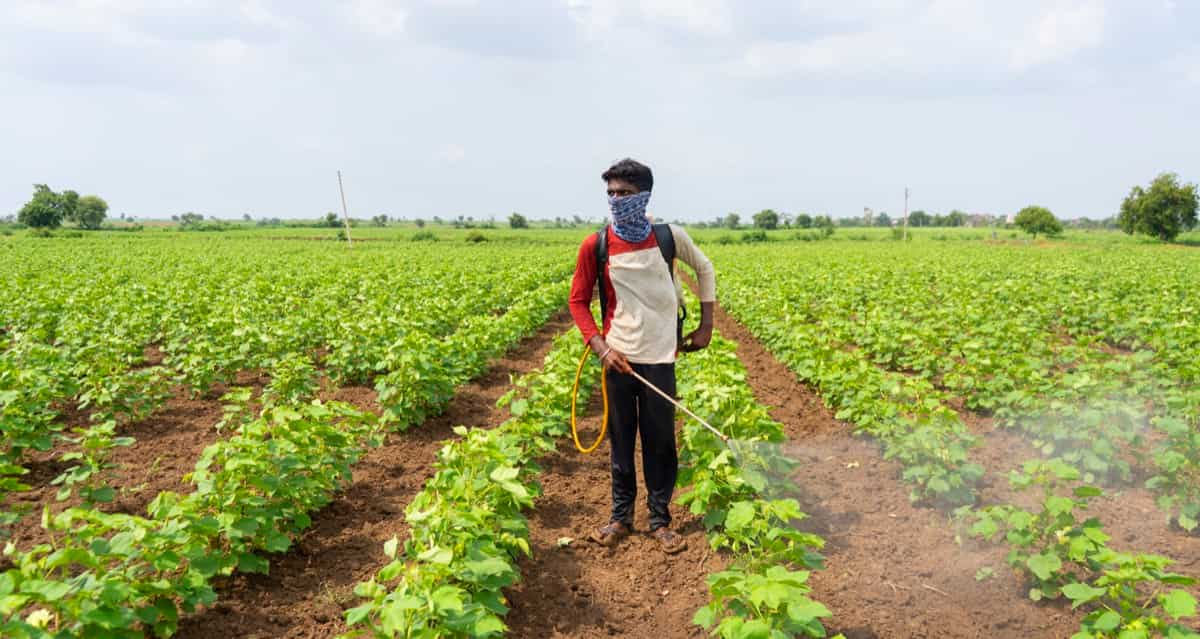Helicoverpa armigera and H. punctigera are major pests of traditional cotton crops. They look alike and do similar damage, but it’s essential to tell them apart because H. armigera has become resistant to pesticides. These two species are usually called “fruit borers” because they bore into the cotton plant’s fruit or boll and inflict harm. Cotton crop output and quality may suffer as a result. Cotton is a plant in the genus Gossypium, which has four species: G. hirsutum, G. barbadense, G. arboreum, and G. herbaceum.

These are perennial plants grown for their fluffy fiber, which protects the seeds. G. hirsutum makes up most of the world’s production. Cotton plants have a central stem, branches, spirally arranged leaves, and triangular lobes. They produce single, red-purple, yellow, or white flowers, followed by a leathery seed capsule, or ‘boll,’ containing white cotton fibers and seeds. Cotton plants grow to about 1-1.5 meters and are usually grown annually, lasting one growing season.
Fruit Borer (Helicoverpa) management in Cotton
The life cycle of Fruit Borer (Helicoverpa)
The fruit borer (Helicoverpa) has four stages in its life cycle: egg, larva, pupa, and adult. The adult moth lays her eggs on leaves or cotton bolls. The larvae dig into the boll after hatching, eating the growing cotton fibers and causing crop damage. The larvae pupate inside the boll before developing into the adult moth. The adult moth may fly and lay eggs, resulting in a fast population increase under favorable conditions.
Favorable conditions favoring an increased population of Fruit Borer in the field
- High temperatures accelerate fruit borer life cycle expansion, increasing population.
- The fruit borer thrives in high humidity and wind.
- Long cotton growing seasons make time for fruit borer generations.
- Green cotton bolls attract the fruit borer and boost the population.
- Lack of natural predators, including birds, spiders, and parasitic wasps, can increase fruit borer populations.
- Poor field management: Late or poor pesticide treatments might let the fruit borer grow.
- Drought, insect damage, and disease can make cotton plants susceptible to fruit borer attacks.
- Understanding these favorable conditions helps create pest control techniques and reduce the fruit borer’s impact on cotton crops.
Identification of the Fruit Borer (Helicoverpa)
- Eggs – Spherical, oval in shape, and creamy white, presented singly
- Larva – Color varies from greenish to brown. It features dark brown-grey lines on the body, lateral white lines, and dark and pale bands.
- Pupa – Brown in color, found in soil, leaves, pods, and agricultural trash.
- Adult Light pale brownish yellow thick moth. The forewings are olive green to pale brown, with a dark brown circular mark in the center. The hind wings are light smoky white with a blackish outer border.
Symptoms of damage by Fruit Borer (Helicoverpa)
- Cotton Bolls with circular boreholes that are regular due to fruit borer attacks.
- Larvae were observed feeding on the boll by inserting their heads into the borehole and leaving the rest of their bodies outside.
- Granular feces pellets were found outside the borehole.
- A single larva may negatively impact 30-40 bolls.
In case you missed it: Stem Rust Disease Management in Wheat: Symptoms, Treatment, Chemical, Biological, Natural, and Organic Control

Impact of Fruit Borer (Helicoverpa) on Cotton crop
The fruit borer (Helicoverpa) can attack all stages of cotton plant growth but prefers reproductive tissue. The damage caused by the borer can result in the loss of seedlings, shedding of squares and small bolls, and reduced development and potential fungal infections in maturing bolls. It can negatively impact the yield and quality of the cotton crop.
ETL management of Fruit Borer (Helicoverpa)
ETL: One egg or larva per plant. Fruit borer (Helicoverpa) management in cotton fields entails monitoring pest levels and setting a threshold of one egg or larva per plant. This threshold helps decide whether pest treatment is needed to prevent significant crop damage. Light, pheromone, and field surveys can monitor. Pest control requires farm, village, block, and state monitoring. Farmers can reduce fruit borer damage to cotton crops by monitoring pest numbers and taking action when the threshold is reached.
Fruit Borer (Helicoverpa) management in Cotton by cultural method
- Cotton ecosystems benefit from the synchronized sowing of short-duration cultivars.
- Avoid continuous cotton farming in the same region and ratooning. Instead, plant less desired crops as intercrops or border crops.
- To avoid pest carryover, remove and eliminate agricultural remnants.
- Limit crop growth by continuously watering and optimizing nitrogen fertilizer application to limit insect proliferation.
- To avoid excessive vegetative growth and larval harborage, practice effective water management.
Fruit Borer (Helicoverpa) management in Cotton by biological method
- Application of Nuclear Polyhedrosis Virus (NPV) at 3 x 10^12 POB/ha
- Conservation and augmentation of natural predators and parasitoids
- Inundative release of egg parasitoid Trichogramma spp. At 6.25 cc/ha
- Release of egg-larval parasitoid Chelonus blackburnii and predator Chrysoperla carnea at 100,000/ha
- ULV spray of NPV with 10% cotton seed kernel extract, 10% crude sugar, 0.1% Tinopal, and Teepol.
Fruit Borer (Helicoverpa) management in Cotton by chemical method
Chemical control is one of the options for controlling the Fruit borer (Helicoverpa) in Cotton. During the early stages of square formation, various insecticides can be used, such as Acephate 75% SP, Azadirachtin 0.03% EC, Carbaryl 10% DP, Chlorantraniliprole 18.5% SC, Chlorpyriphos 20% EC, Diflubenzuron 25% WP, Emamectin benzoate 5% SG, Fipronil 5% SC, Flubendiamide 20% WG, and Flubendiamide 39.35% SC.
In case you missed it: Rice Brown Spot Management in Paddy: Symptoms, Treatment, Chemical, Biological, Natural, and Organic Control

During the bolling and maturation stage, Quinalphos 25 EC, Carbaryl 50 WP, and Pyraclofos 50 EC are effective insecticides that can be applied with 1000 liters of spray fluid per hectare. Following the recommended dosages and taking necessary precautions while handling these insecticides is essential.
Fruit Borer (Helicoverpa) management in Cotton by organic/natural method
Biopesticides: NVP (nucleopolyhedrovirus) and Bt, Bacillus thuringiensis, are two pathogens of Helicoverpa armigera that are commercially accessible. NVP is highly selective, infecting only Helicoverpa armigera and closely related species.
Preventive measures for control of Fruit Borer (Helicoverpa)
- Use resistant or tolerant cultivars if available.
- Plant early to prevent pest population increases.
- Leave appropriate spacing between plants.
- Provide uncultivated marginal lands to interrupt the cycle of life.
- Place perches for birds to attract caterpillar-eating birds.
- Utilize trap crops, such as marigolds (Tagitus erectus), every five to six rows.
- Utilize light or pheromone traps to monitor or catch large numbers of moths.
- Prevent water stress by ensuring proper drainage.
- Examine plants for the presence of eggs and damage to blooms, fruits, pods, and bolls.
Conclusion
Fruit borer management in Cotton includes monitoring for early detection, using cultural techniques such as crop rotation, supporting natural predators, and employing a combination of chemical, biological, natural, and organic remedies for successful pest management.
- Beneficial Insects in Pest Management
- Natural Solutions for Pest Control in Flower Gardens
- Types of Fungicides Used in Agriculture
- Common Issues in the Fruit Development Stage of Pomegranate Farming
- Fruit Development Issues in Papaya: Easy Solutions and Treatment
- Soil-Borne Diseases and How to Protect Your Plants
- Practices to Prevent Disease Spread in the Garden
- From Wilted to Thriving: How to Treat Root Rot Naturally in Houseplants
- Natural Remedies to Cure Brown Spots on Fig Tree Leaves